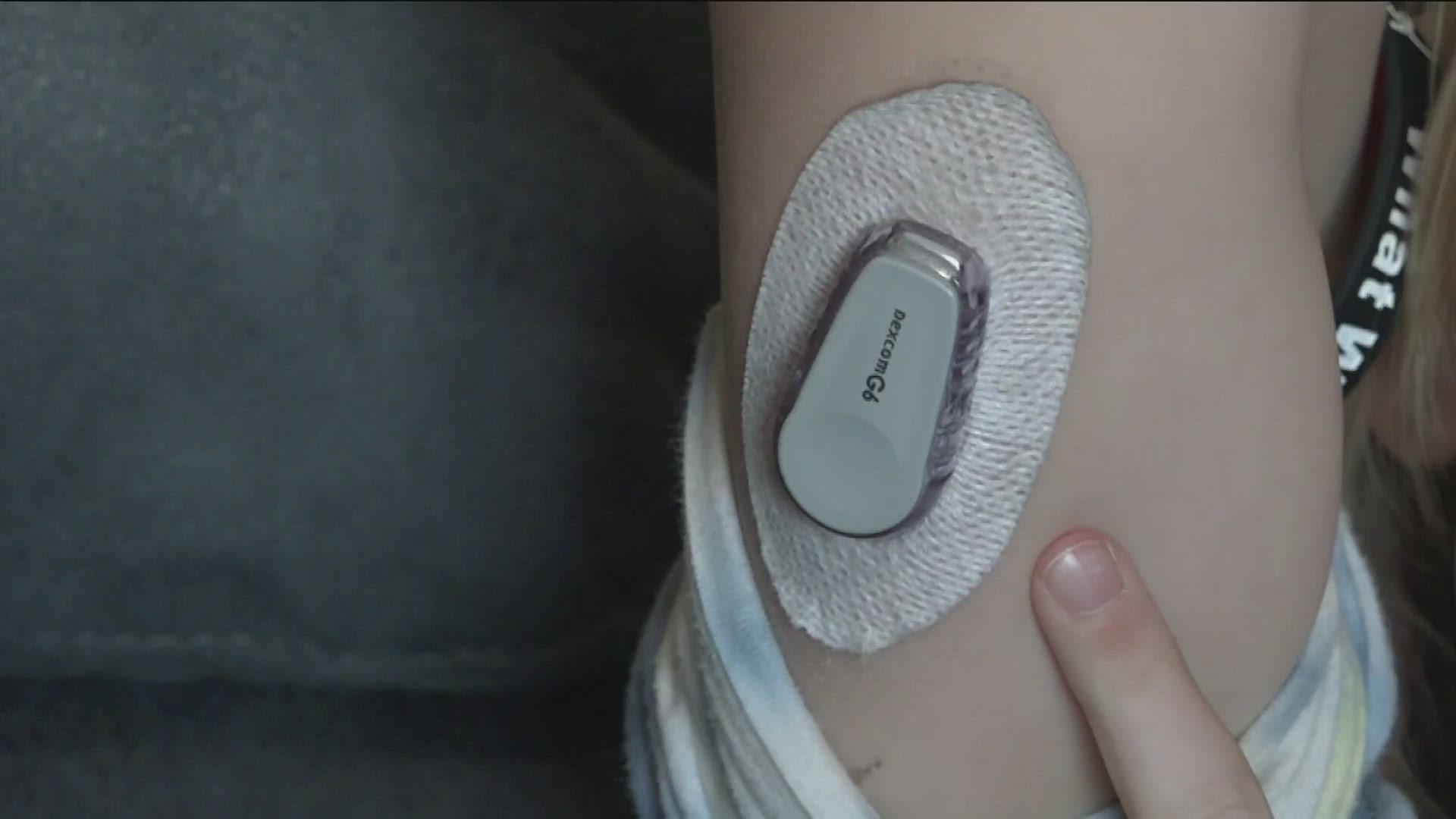OREGON, Ohio — Drug affordability has been talked about for years, especially with the price of insulin getting higher and higher. But on March 1, drugmaker Eli Lilly announced a monthly cap of $35 dollars on out-of-pocket costs for insulin, effective immediately.
For a northwest Ohio family of six, this news was music to their ears.
Elizabeth Schenk and Corey Cousino, of Oregon, have four daughters. Two are Type 1 diabetics. While the news was a relief, Schenk said there's still more work to be done. When 12-year-old Lilliana was diagnosed with Type 1 diabetes about six years ago, it threw Schenk and Cousino for a loop.
"We didn't know anything about it when she was diagnosed. She had a UTI, so we took her to the doctor," Schenk said. "They literally pulled me aside and said 'we need you to go to Toledo Hospital right now.'"
So for the next five years, the family learned how to manage Type 1 diabetes, while Lilliana kept a positive outlook on her diagnosis.
"It's alright, it's gonna be okay," Lilliana said. "You can still do everything you can still eat everything you want to. You just have to dose (insulin) for it."
Schenk said the girls are fully active and play year-round sports including softball, volleyball and cross country. Like most siblings, they enjoy roughhousing. For the family overall, there was no major change, just some adjusting.
But their experience with this disease didn't stop there. Just last year, Lillian's 9-year-old sister Kinsley was diagnosed with Type 1 diabetes as well.
"(Kinsley's) experience was perfect, but we went into her's knowing," Schenk said.
Both Kinsley and Lilliana wear monitor devices that notify them as well as their parents when their sugars are low or high. Both parents and the girls are able to keep an eye on themselves and each other and Cousino said that gives him peace of mind.
"I can be at work while (Kinsley's) at school and I'll get a notification on my cellphone about her," Cousino said.
The parents are grateful for the advances in technology and would like more for the estimated nearly 2 million Americans living with Type 1 diabetes.
Especially when it comes to insulin.
The family said the cost of insulin started putting a strain on their budget as the prices continued to climb.
Some insulin doses for diabetics could reach as high as $700 dollars per carton, according to GoodRX.com. Add the financial stress of that on top of the family dealing with some insurance issues, and it all has made for one big headache.
"It's a lot of back and forth, and phone calls, and just trying to get any kind of help or coverage for her (Kinsley.) With Lilliana she does have primary coverage with him from his work," Schenk said.
Statistics according to the Kaiser Family Foundation found 5% of diabetics are uninsured, while 40% have private insurance. Of that 40%, only 1 in 5 pay more than $35 dollars a month for insulin. For a family with two, Type 1 diabetics, life-saving medication gets costly.
Schenk said she was grateful one of the weights has been lifted off of her family with Eli Lilly's monthly cap on out-of-pocket expenses.
"Now if only (medical) supplies could come down too. But, it's all in the process, right?" Schenk said. "This is the start of what we hope."
The family is a big advocate for nonprofits Diabetes Youth Services and JDRF. They say if anyone is looking to help or needs services, they should check out both of those organizations as they do great work within the diabetic community.
You can find out more about DYS at this link and more information on the JDRF here.

